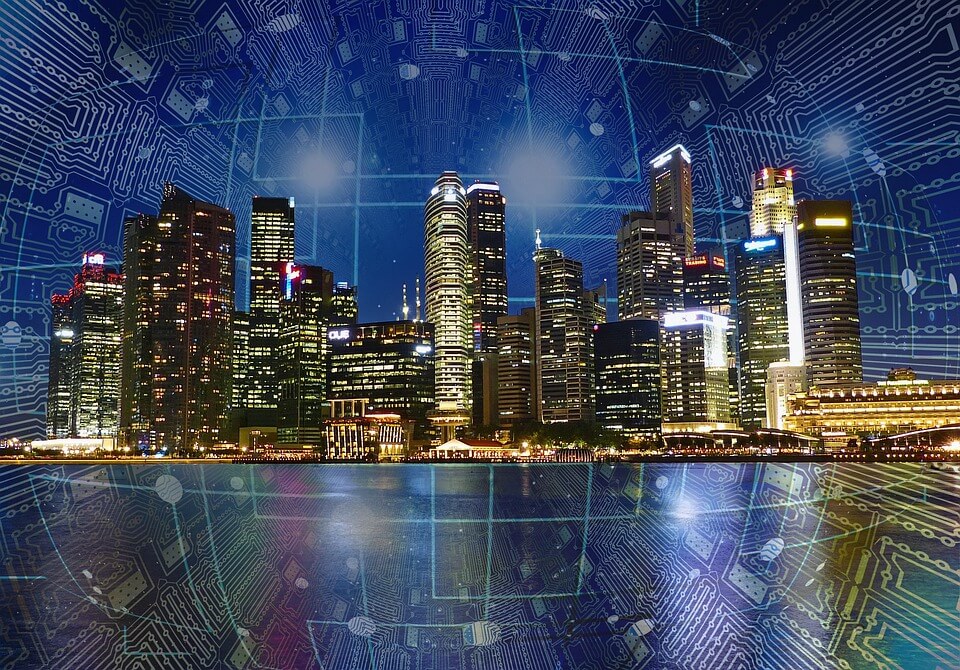The Internet has changed the world big-time. IoT- has been the first kickoff toward a smart world, where devices make smart decisions to such an extent, they are almost equivalent to cognitive intelligence.
In the present-day world, smart devices are not limited to just mobile phones or iPads, but their scope has extended to washing machines, doors, coffee machines, vacuum cleaners, and even smart glasses.
According to IoT Analytics, approximately 11.6 billion devices were connected to the internet in 2021; this number is predicted to grow to 30 billion IoT devices by 2025. The market valuation of IoT industry is estimated to be $148 billion today. By the year 2025, it is expected to surpass $157 billion, according to Statista.
Smart cities
Right from a coffee machine to cars, every machine is designed to be smart today. The adoption of smart technologies will widen with low-cost connectivity and high data speed enabled with the emergence of 5G. This will enable the rise of smart cities – a smart city is toted to be a place where surveillance systems, bike rental stations, taxis, emergency updates, and much more will be self-automated and remotely managed.
Well in the future, you don’t even have to update Alexa for dinner. Your car will do that for you.
IoT will nurture Artificial Intelligence
The world is connected through smart devices today.
Consider devices like smartphones, smartwatches, thermostats, home hubs, coffee makers or any other smart device – they record your habits and preferences over a period and assess them to understand your needs beforehand. This surplus data is stored in the cloud and ends up feeding AI to evolve into a ‘smart’ device for the future. Machine learning uses this data to help computers/machines adjust to preferences automatically without human intervention.
5G to fuel the future of IoT
5th generation cellular wireless is on its way shortly, promising higher speed and increased connectivity. The faster the network connectivity, the easier the accumulation and management of data from smart devices. This is encouraging companies to produce more devices for the future of IoT. By 2025, with the increasing use of video surveillance cameras and the industrial application of IoT, it is expected that 73 zettabytes of data will be collected from IoT devices.
DDoS attacks can become a nightmare
The first IoT malware attack happened in 2016. During the Mirai malware attack, connected devices were affected by a virus to turn them into a botnet to enable a Distributed Denial of Service (DDoS) attack. A DDOS attack overloads website traffic and brings the server to a halt.
The chances of similar occurrences are high as IoT will be a major part of the digital world, leading to increased security and privacy concerns.
Consider possibilities where IoT devices may be manipulated or weaponized due to rivalries between nations. To illustrate, any nation can shut down the whole communication network of their rival in no time by performing a DDoS attack.
Secure and Smart Routers will emerge
As routers are the entry point of the internet for many, effective measures will be taken to improve their security. This may even become essential, as the router can offer security at the entry point while connected devices cannot be secured.
Internet of things growth and Application
IoT trends are all over the globe. The future of IoT holds a great share in our day-to-day lives. Let us look at some applications of IoT in various industries around the world.
–Retail: Smart vending machines, customer relationship managers, inventory management, etc. are being used in the retail industry.
–Healthcare: In a report by Deloitte, the anticipated market value of IoMT i.e., Internet of medical things, will reach $158 billion by the year 2022. Personal nurses and assistants for reminders and guidance, health monitoring, and health worker management, are examples of IoT usage in the healthcare sector.
–Energy: Companies are trying to use IoT-based systems to better optimize their processes and fulfill their customers’ needs. Some applications are grid optimization, predictive maintenance, monitoring assets remotely, and optimized power distribution.
–Agriculture: The requirement for food products is increasing with the growing population and farmers are trying hard to keep up with the pace. IoT’s growth could be the key to providing for the masses. Farmers can make better decisions with predictive analytics, making more accurate forecasts about the weather, condition of the soil, type of fertilizers required, and so on.
–Manufacturing: Factories with remote-controlled machinery, automated floor mapping, and smart quality checks are some examples of the Internet of things trends in the manufacturing industry.
–Supply Chain: Keeping up with the internet of Things trend is fruitful for the supply chain industry. Its applications can reduce load and increase the efficiency of processes. Some applications are monitoring storage, inventory management, workers' connectivity, and collaboration, forecasting of storage units, etc.
Overall, it may be said
The possibilities of IoT are limitless.
While the future of IoT aims for a connected and smart world, it also is developing a parallel universe of data/information. Albeit harnessing this surplus data can enable actionable insights to disrupt businesses and make lives better, the development of significant data management frameworks will be essential for a secure and healthy digital environment.









